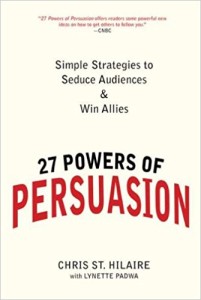Deep Dive to Create More Blog Content

Deep dive, freshsparks.com advises blog content writers. “Take articles with more general information and create a separate article focusing on one specific area.”
All the way back in 2008, I wrote about target marketing in a Say It For You blog post titled “If the Parents Hate It, the Kids Will Love it”. I had based the post on an article in Speaker magazine about the Alice Cooper rock music group, whose stage show was considered “over the top” by anybody’s standards at the time, complete with guillotines, electric chairs, fake blood, live chickens, and a boa constrictor, with a male in tattered women’s clothing holding a snake. The band, according to professional speaker Terri Langham, had made a brilliant career decision, focusing on one target audience – kids. “If the parents hate it, the kids will love it” became the motto.
In that post about the Alice Cooper band’s marketing strategy, I advised blog content writers to emulate that kind of targeting, narrowing down their market focus. It doesn’t matter, I advised blog writers, if other segments of the market hate your blog, so long as your target customers love it.
In the years following, I’ve come back to that target marketing theme time and again to take a deeper dive:
- In Blogs and Podiums – Choose Yours Wisely: “Who are your target customers or clients? What approach would have the most appeal to that segment of your market? Will the emphasis be on your product or on special service and expertise? Pick one primary area of focus – don’t try to do everything in one blog.”
- In Befitting Bloggery: “Everything about your blog should be tailor-made for that customer – the words you use, how technical you get, how sophisticated your approach, the title of each blog entry – all of it.”
- In With Blogging, a Small Business Can Have a Long Tail: “Regular, high quality content, posted consistently on your blog, can have a huge effect in a small market.”
- In Scoping Out Your Blogging Niche: “Blogs, after all, use “pull marketing”. The people who find your blog are those who are already online looking for information, products, or services that relate to what you know, what you have, and what you do! Your online marketing challenge is not to seek out the people, but to help them seek you out!”
- In Smaller Targets, Better Hits: “Blogs are smaller, shorter and more centered around just one idea than e-zines or newsletters or even web page content. And blog posts will stick around forever. Blogs can link to other blogs and web sites, turning mini-power into maxi-power, and increasing exposure to the search engines.”
Deep dive into your own blog content, creating more content and more detailed information.

 “Many claim that the word “forte”, coming from the French fort, should properly be pronounced with one syllable. Common usage, however, prefers the two-syllable pronunciation (for-tay), which has been influenced by the music term forte, borrowed from Italian. Speakers can continue using forte as one syllable knowing that the origin of the word supports this pronunciation, but they do so at increasing risk of puzzling their listeners.”
“Many claim that the word “forte”, coming from the French fort, should properly be pronounced with one syllable. Common usage, however, prefers the two-syllable pronunciation (for-tay), which has been influenced by the music term forte, borrowed from Italian. Speakers can continue using forte as one syllable knowing that the origin of the word supports this pronunciation, but they do so at increasing risk of puzzling their listeners.”


Follow us online!